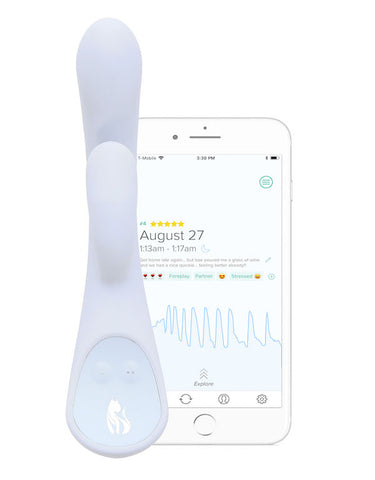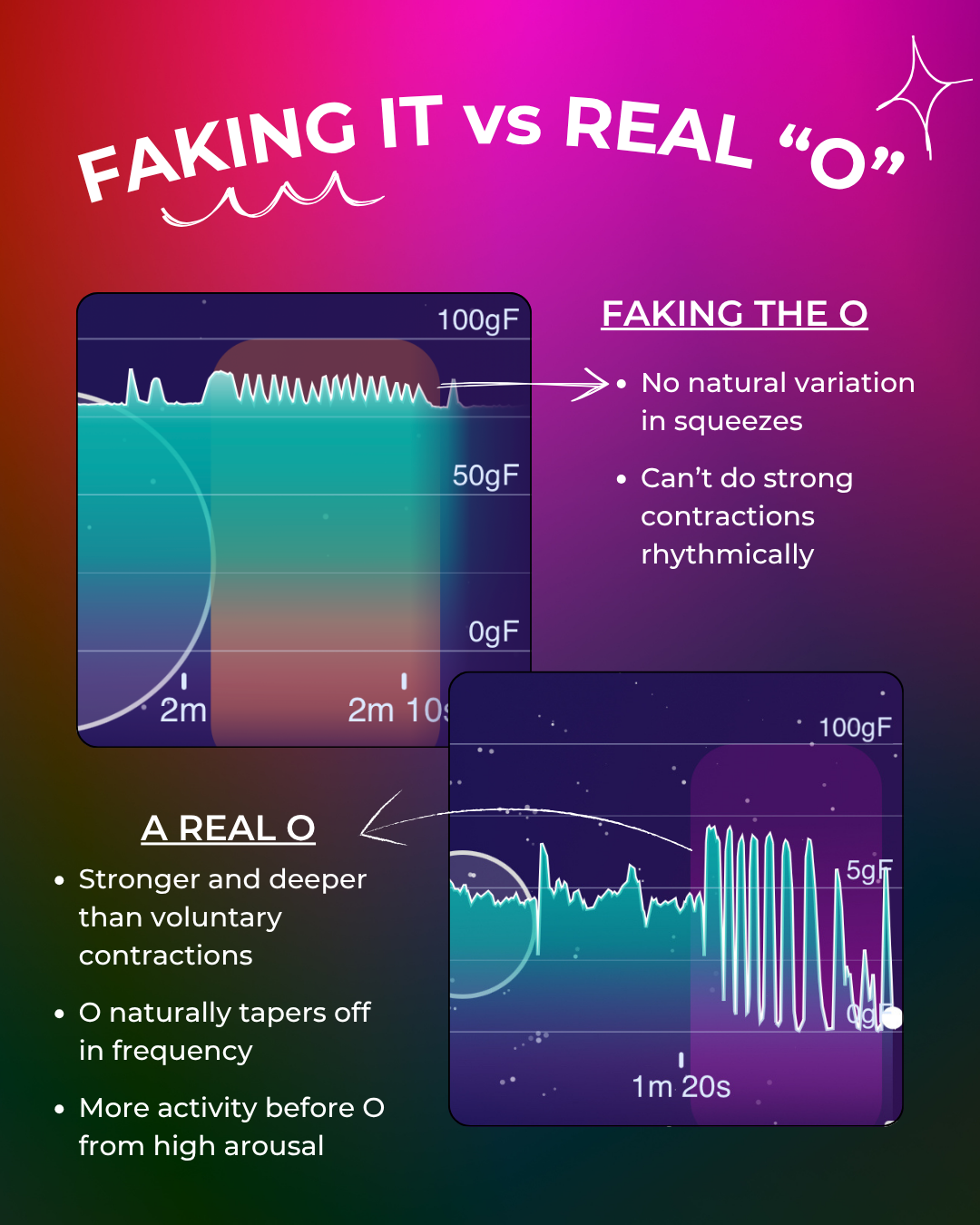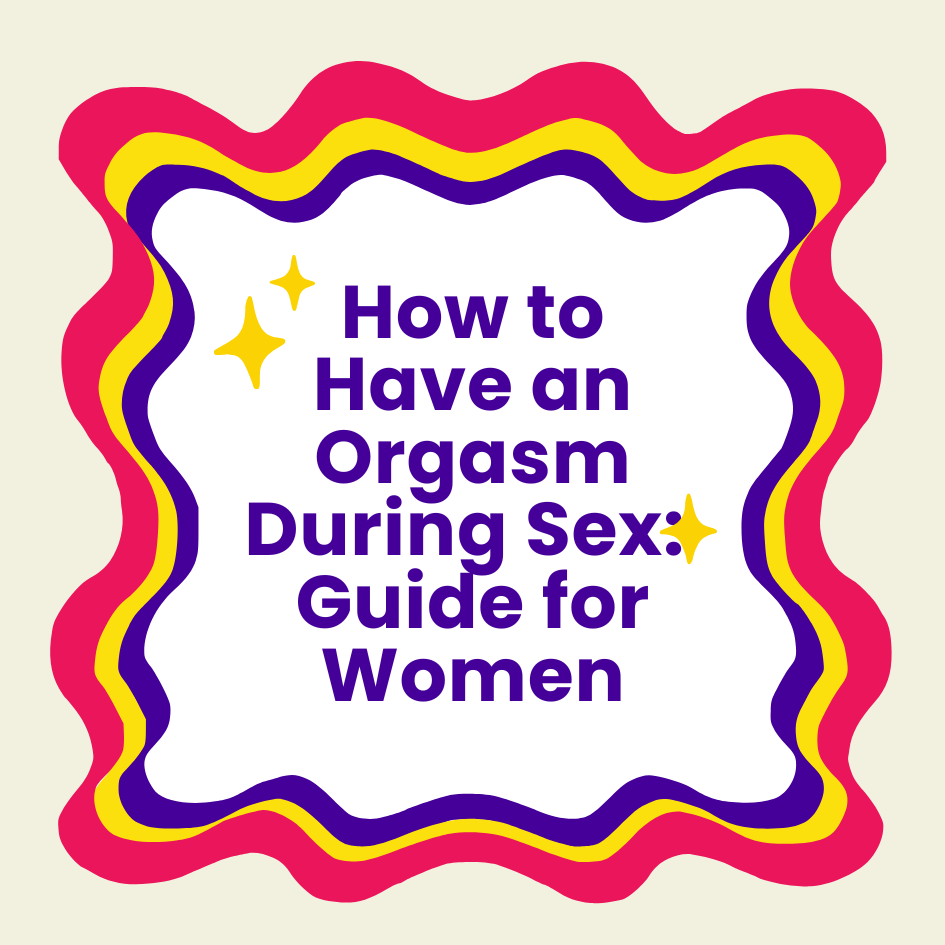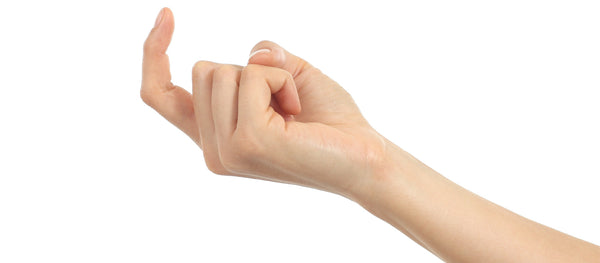
“Come hither”… but where?
By James Wang and Liz Klinger, Co-founders of Lioness
After my unexpectedly popular article on if vibrators make it harder to orgasm during sex, I figure I should continue to address other popular questions I've encountered in the course of my role at Lioness and the research I've come across on them.
Today, I'm going to address a more fraught topic: "What is the g-spot?"
It has so many names—Gräfenberg spot, G-area, female prostate, black pearl, (other) pleasure button... but we don't have that much concrete information about it. Is the g-spot real? Where is it? How do I find my g-spot? How do you best stimulate it and have a g-spot orgasm?
As one study on the topic mentioned, it's rather surprising that we still have an area of such major uncertainty about basic human anatomy.
Does the g-spot exist?
It's complicated. I've gotten many different answers from medical practitioners—everything from: "It's actually something called the Skene's glands" to "It's actually the deeper clitoral structure," to "It doesn't exist", to simply "No one knows."

Confusion. Courtesy of Pixabay @ Pexels.
What Does Science Say About the G-Spot?
With this fairly terse statement in 1950, Ernest Gräfenberg, MD in New York and namesake for the g-spot, launched a thousand studies searching for the g-spot. Unfortunately, like many studies on female anatomy, Dr. Gräfenberg was quite heavy on anecdotes and exposition, and pretty light on data. [3]"An erotic zone always could be demonstrated on the anterior wall of the vagina along the course of the urethra."
Since then, there's been a lot of research papers that have taken positions across the spectrum—just like the practitioners. In just this last decade, papers discuss finding it clearly through dissection [9] to the g-spot being a, "gynecologic UFO: much searched for, much discussed, but unverified by objective means." [4]
Why is it so Controversial?
You'd think that a basic body part of the female reproductive system shouldn't cause so much controversy. I mean, it's just there or not, right?
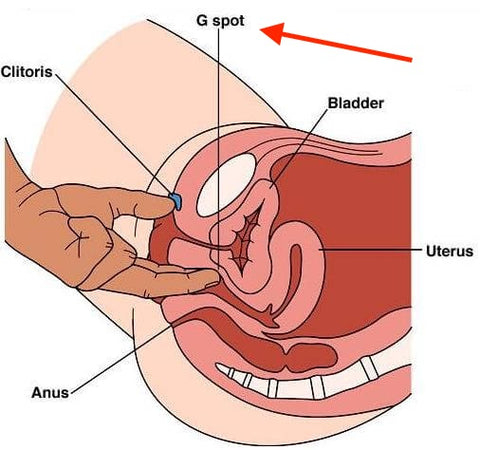
Isn't it just right there?
Not Enough Research
To put things in perspective, the existence of clitoris and female orgasm has also been controversial—some fairly recent anatomy textbooks still don't include descriptions of it. [8] Unfortunately, research into the g-spot—and the clitoris... and most topics in female sexuality—are not particularly strong funding magnets. There's no military application, and there aren't companies that have immediate use for basic research into the topic (pharmaceuticals need disorders to cure—base understanding alone doesn't really make money).
It Isn't Consistent
One thing non-researchers/academics often don't appreciate is how precise terminology is in science. Just having something in this general area that feels good when stimulated isn't enough to define the g-spot.
Attempts to pin down what the g-spot is have been slippery. Gräfenberg's original paper talked about this zone—he didn't call it the g-spot—being connected to the urethra. Since then, in connection with research into female ejaculation (squirting), it got clarified into Skene's glands which was also posited to the be source of female ejaculate.
Unfortunately, in different studies, people tended to report the g-spot in different spots—and often not where the Skene's glands are. This then led to a lot of research and activity into looking for places in the vagina with more nerve-endings, which has been inconclusive, and positing that maybe g-spot sensations are from pressing against the clitoral structure—which is much larger than most people are aware and also exists around the vagina.
So What Does This Mean For Me? (aka, so how do I get a g-spot orgasm?)
First off, given what little we know about what the g-spot really is — is it Skene's glands? The internal part of the clitoris? Nerves? Something else? — if you can't find it where "everyone says it is," you shouldn't be too concerned. That's pretty consistent with what's caused researchers to pull their hair out on the topic for years. You're definitely not "messing it up" or abnormal.
Second, that means if you DO know where it is for you, that's great and keep doing what you're doing.

You do you... since it all varies by person
In both cases, the best way to figure out both where it is and what works is just by self-experimenting. Try different techniques at different times, and don’t be afraid to add clitoral and other forms of stimulation (nipple, anal, etc) along with g-spot/internal stimulation to explore your pleasure and find what feels good for you. Try different sex toys and see what works for you.
There's just too much we broadly don't know in female sexuality (or even just basic anatomy) to conclusively give everyone the same advice, and bodies just often behave differently. Our bodies even behave differently based on exercise, hormones, how stressed we are, if we’re taking a medication, or just... you know, aging.
It's a big part of why we made the Lioness Vibrator—and this isn't just a plug, it is literally one of the most significant reasons we exist.
One Thing to Take Away
Popular media has made a big deal out of the g-spot and just assumed it's there—with confident pronouncements of where it is.
Although it's not great that it's promoting some level of misinformation, it's practically become shorthand for "that place that feels good besides the clitoris (in the vagina)". By and large, most have an easier time orgasming from external clitoral stimulation, but that isn't always going to be the only way that works for individuals. If a "gynecological UFO" causes people to explore beyond the clitoris, perhaps that's a good thing.
Nonetheless, if there's anything to take away from this rather messy topic, it's that ultimately don't worry if what seems to be popularly reported to work for others doesn't work for you—or vice versa, if you find certain things work but no one else does. There's no better source of information—especially in our current state of knowledge—than your own body. So you do you (figuratively and literally).
===
Intrigued? Explore your g-spot (and more) with The Lioness
Unlock the secret to better orgasms with Lioness, the world’s most advanced vibrator.
Using built-in sensors and an intuitive mobile app, Lioness lets you visualize your arousal and orgasms. Simply use Lioness like any other vibrator, then review the results on your phone. Soon, you’ll begin to understand how your body responds and make every climax more enjoyable.
Click here to learn more.
===
References
[1] Colson, M. H. (2010). Female orgasm: Myths, facts and controversies. Sexologies, 19(1), 8–14.
[2] De Souza, A., Dwyer, P. L., Rosamilia, A., Hiscock, R., Lim, Y. N., Murray, C., et al. (2011). Sexual function following retropubic TVT and transobturator Monarc sling in women with intrinsic sphincter deficiency: a multicentre prospective study. International Urogynecology Journal, 23(2), 153–158.
[3] Gräfenberg, E. (1950). The role of urethra in female orgasm. The International Journal of Sexology, III(3), 145–148.
[4] Hines, T. M. (2001). The G-spot: A modern gynecologic myth. American Journal of Obstetrics and Gynecology, 185(2), 359–362.
[5] Jannini, E. A., Buisson, O., & Rubio-Casillas, A. (2014). Beyond the G-spot: clitourethrovaginal complex anatomy in female orgasm. Nature Publishing Group, 1–8.
[6] Kilchevsky, A., Vardi, Y., Lowenstein, L., & Gruenwald, I. (2012). Is the Female G‐Spot Truly a Distinct Anatomic Entity? The Journal of Sexual Medicine, 9(3), 719–726.
[7] Levin, R. J. (2003). The G-spot—reality or illusion? Sexual and Relationship Therapy, 18(1), 117–119.
[8] O'CONNELL, H. E., SANJEEVAN, K. V., & HUTSON, J. M. (2005). ANATOMY OF THE CLITORIS. The Journal of Urology, 174(4), 1189–1195.
[9] Ostrzenski, A. (2012). G‐Spot Anatomy: A New Discovery. The Journal of Sexual Medicine, 9(5), 1355–1359.
[10] Puppo, V. (2011). Embryology and anatomy of the vulva: the female orgasm and women's sexual health. European Journal of Obstetrics and Gynecology, 154(1), 3–8.
[11] Thabet, S. M. A. (2009). Reality of the G-spot and its relation to female circumcision and vaginal surgery. Journal of Obstetrics and Gynaecology Research, 35(5), 967–973.
[12] S. Aydin, F. Cavide Sönmez, A. Filiz Gökmen Karasu, Burcu Gül & Çağrı Arıoğlu (2020). Search for the G spot: microvessel and nerve mapping of the paraurethral anterior vaginal wall. International Urogynecology Journal, 10.1007.

